Pad Mount vs. Pole Mount Transformers: Which is More Efficient for Urban Areas?
Have you ever wondered why some neighborhoods have big green boxes on the ground while others have transformers hanging on poles? The choice between these two can greatly impact urban living.
Pad mount transformers are generally more efficient for urban areas compared to pole mount transformers. They offer better space utilization, enhanced safety, improved aesthetics, and easier maintenance access. However, the choice depends on specific urban layout, cost considerations, and local regulations.
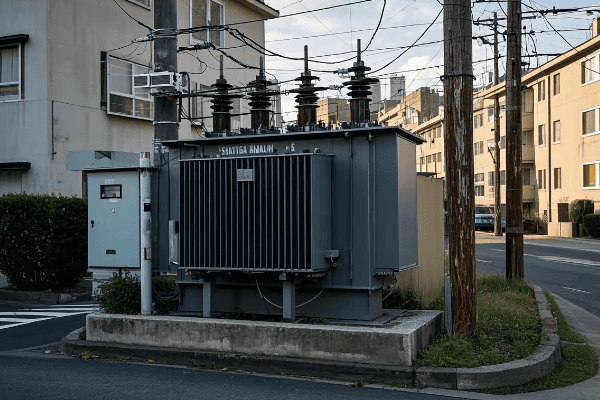
As someone who’s worked in urban power distribution for years, I’ve seen firsthand how the right transformer choice can make or break a city’s electrical infrastructure. Let’s dive into the details of pad mount and pole mount transformers to understand which one might be the best fit for your urban area.
What Are Pad Mount and Pole Mount Transformers? A Quick Overview
When I first started in this industry, I was confused by the variety of transformers out there. But understanding the basics is crucial for anyone involved in urban planning or electrical engineering.
Pad mount transformers are ground-level units enclosed in metal cabinets, typically seen as green boxes in residential areas. Pole mount transformers are mounted on utility poles. Both types step down high voltage electricity to levels suitable for end-users, but their design and placement differ significantly.
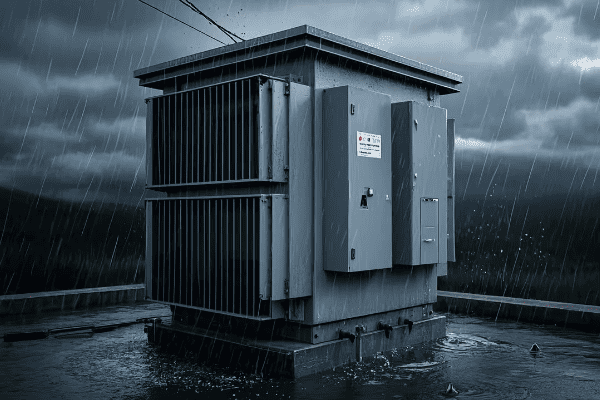
Let’s break down the key characteristics of each:
Pad Mount Transformers
- Location: Ground level
- Enclosure: Metal cabinet, often green
- Size: Larger footprint, but lower profile
- Typical Use: Residential areas, commercial zones
Pole Mount Transformers
- Location: Elevated on utility poles
- Enclosure: Open to air, with minimal covering
- Size: Smaller footprint, but more visible
- Typical Use: Rural areas, older urban neighborhoods
I remember a project where we were upgrading a suburban area’s electrical system. The neighborhood had a mix of old pole mount transformers and newer pad mount units. The contrast was striking – the areas with pad mounts had a cleaner, more modern look, while the pole mounts gave a more traditional, industrial feel.
Here’s a quick comparison table:
| Feature | Pad Mount | Pole Mount |
|---|---|---|
| Installation | Ground level | Elevated on poles |
| Aesthetics | Less visible | More visible |
| Space Required | More ground space | Less ground space |
| Accessibility | Easy ground access | Requires climbing |
| Safety | Enclosed, tamper-resistant | Open, potential climbing hazard |
| Typical Capacity | Higher | Lower |
The choice between pad mount and pole mount transformers often comes down to more than just technical specifications. In urban areas, factors like space availability, local regulations, and even community preferences play a big role.
Key Differences Between Pad Mount and Pole Mount Transformers
When I first started comparing these two types of transformers, I was amazed at how two devices with the same basic function could be so different in their design and application.
The key differences between pad mount and pole mount transformers lie in their installation, safety features, capacity, and visual impact. Pad mount transformers offer higher capacity and better safety features but require more ground space. Pole mount transformers are more visible but take up less ground space and are often cheaper to install.

Let’s dive deeper into these differences:
1. Installation and Space Requirements
Pad Mount:
- Requires a concrete pad at ground level
- Takes up more ground space
- Easier to install in areas with underground utilities
Pole Mount:
- Mounted on existing or new utility poles
- Minimal ground footprint
- Requires overhead power lines
2. Safety Features
Pad Mount:
- Enclosed in tamper-resistant cabinets
- Less exposed to weather elements
- Reduced risk of public contact
Pole Mount:
- More exposed to elements
- Potential climbing hazard
- Higher risk of animal interference
3. Capacity and Scalability
Pad Mount:
- Generally higher capacity (up to 5000 kVA)
- Easier to upgrade or replace
- Better suited for growing power demands
Pole Mount:
- Typically lower capacity (up to 167 kVA)
- More challenging to upgrade
- Limited by pole strength and space
Here’s a detailed comparison table:
| Feature | Pad Mount | Pole Mount |
|---|---|---|
| Installation Location | Ground level | Elevated on poles |
| Ground Space Required | More | Less |
| Visual Impact | Low | High |
| Typical Capacity Range | 75 kVA – 5000 kVA | 10 kVA – 167 kVA |
| Safety Enclosure | Fully enclosed | Partially open |
| Weather Protection | High | Moderate |
| Maintenance Accessibility | Easy | Challenging |
| Installation Cost | Higher | Lower |
| Scalability | Easier to upgrade | Limited by pole capacity |
| Typical Lifespan | 30-40 years | 20-30 years |
I recall a project in a rapidly growing suburban area where we initially installed pole mount transformers due to budget constraints. However, as the power demand increased, we found ourselves constantly upgrading and replacing these units. Eventually, we switched to pad mount transformers, which, despite the higher initial cost, proved more cost-effective in the long run due to their higher capacity and easier upgradability.
Space Efficiency: How Pad Mount Transformers Optimize Urban Land Use
In my years of working on urban power projects, I’ve seen how valuable every square foot of land can be. This is where pad mount transformers really shine in optimizing urban land use.
Pad mount transformers optimize urban land use by having a lower profile and integrating seamlessly with landscaping. While they require more ground space than pole mounts, their compact design allows for creative placement options. This efficiency is crucial in dense urban areas where space is at a premium.
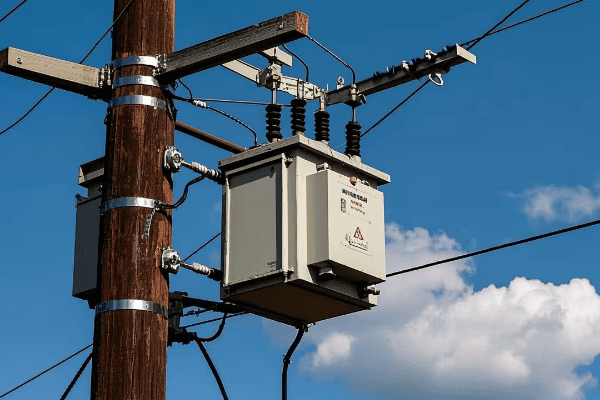
Let’s explore how pad mount transformers contribute to space efficiency in urban settings:
1. Compact Design and Integration
Pad mount transformers are designed to blend into their surroundings:
- Low profile allows for easy concealment with shrubs or fencing
- Can be incorporated into urban design elements like planters or seating areas
- Eliminates the need for overhead lines, freeing up vertical space
2. Underground Utility Compatibility
Pad mounts work well with underground utility systems:
- Aligns with modern urban planning trends of burying power lines
- Reduces clutter in the urban skyline
- Allows for more efficient use of above-ground space
3. Flexible Placement Options
The ground-level installation offers various placement possibilities:
- Can be installed in alleys, along property lines, or in dedicated utility areas
- Multiple units can be grouped together in larger developments
- Easier to plan around in new construction projects
Here’s a comparison of space utilization:
| Aspect | Pad Mount | Pole Mount |
|---|---|---|
| Ground Footprint | Larger (typically 4-6 sq ft) | Smaller (pole base only) |
| Vertical Space Used | Minimal (3-5 ft high) | Significant (20-40 ft high) |
| Clearance Requirements | Minimal surrounding space | Large clearance around pole |
| Integration with Landscaping | Easy | Challenging |
| Impact on Usable Land | Can be incorporated into unusable spaces | Pole placement can disrupt land use |
One project that stands out in my memory involved a high-density residential development. We used pad mount transformers placed strategically around the complex. By integrating them into small garden areas, we not only provided the necessary power but also created pleasant green spaces for residents. This dual-use approach was a hit with both the developers and the city planners.
Safety Considerations: Comparing Pad Mount vs. Pole Mount in Urban Settings
Safety is always my top priority when working on any electrical project, especially in busy urban areas. The choice between pad mount and pole mount transformers can significantly impact public safety.
Pad mount transformers generally offer better safety features in urban settings compared to pole mount transformers. They have tamper-resistant enclosures, are less exposed to weather and accidents, and reduce the risk of electrical hazards. However, pole mount transformers have their own safety advantages, particularly in flood-prone areas.

Let’s dive into the safety aspects of both types:
Pad Mount Transformer Safety Features
-
Tamper-Resistant Enclosures
- Locked metal cabinets prevent unauthorized access
- Reduces risk of vandalism and accidental contact
-
Ground-Level Installation
- Eliminates climbing hazards associated with pole mounts
- Easier to secure and monitor
-
Weather Protection
- Enclosed design protects against rain, snow, and debris
- Less susceptible to damage from storms
Pole Mount Transformer Safety Aspects
-
Elevation Advantages
- Less vulnerable to flooding
- Reduced risk of vehicle collisions
-
Visibility
- Easier to spot issues from a distance
- Can be quickly identified in emergency situations
-
Isolation
- Physical distance from public areas
- Less likely to be tampered with by pedestrians
Here’s a safety comparison table:
| Safety Aspect | Pad Mount | Pole Mount |
|---|---|---|
| Public Access | Limited by enclosure | Limited by height |
| Weather Exposure | Low | High |
| Flood Risk | Higher | Lower |
| Vandalism Risk | Low (if properly secured) | Low (due to height) |
| Vehicle Collision Risk | Present but can be mitigated | Low |
| Electrical Shock Risk | Low (enclosed) | Higher (more exposed) |
| Fire Containment | Better | Limited |
| Emergency Access | Easy | Requires climbing equipment |
In my years of experience, I’ve encountered various safety scenarios. For instance, in a flood-prone area, we opted for pole mounts to keep the equipment above potential water levels. This decision proved wise during a severe flood season.
Aesthetic Impact: Which Transformer Type Blends Better with Urban Landscapes?
In my years of working on urban electrical projects, I’ve learned that the visual impact of infrastructure can be just as important as its technical function. The choice between pad mount and pole mount transformers can significantly affect the look and feel of an urban area.
Pad mount transformers generally blend better with urban landscapes compared to pole mount transformers. Their low profile and ability to be concealed or integrated into urban design elements make them less visually intrusive. Pole mount transformers, while more visible, can sometimes complement the aesthetic of certain urban areas, particularly in historic districts.
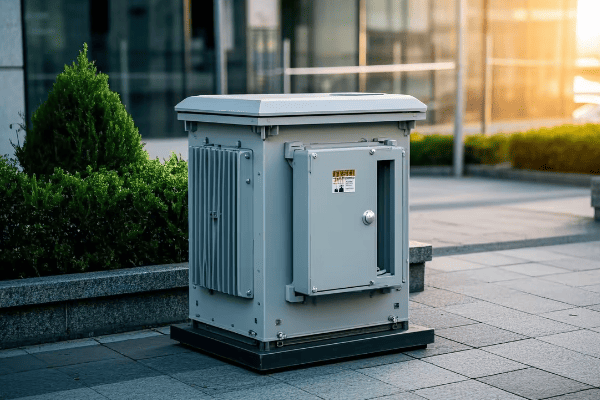
Let’s explore the aesthetic considerations for both types:
Pad Mount Transformers
-
Low Visual Profile
- Can be easily hidden behind landscaping
- Often painted to blend with surroundings
-
Integration with Urban Design
- Can be incorporated into street furniture or public art
- Allows for creative urban planning solutions
-
Reduction of Overhead Clutter
- Eliminates need for visible overhead lines
- Creates cleaner skylines in urban areas
Pole Mount Transformers
-
Traditional Urban Look
- Can contribute to a nostalgic or historic feel in some areas
- Part of the familiar urban infrastructure
-
Vertical Space Utilization
- Keeps ground space clear for other uses
- Can be combined with street lighting or signage
-
Visibility for Maintenance
- Easier to spot and access for repairs
- Can serve as landmarks for utility workers
Here’s an aesthetic comparison table:
| Aesthetic Aspect | Pad Mount | Pole Mount |
|---|---|---|
| Visual Impact | Low | High |
| Ability to Conceal | High | Low |
| Integration with Landscaping | Easy | Challenging |
| Skyline Impact | Minimal | Significant |
| Flexibility in Design | High | Limited |
| Historical Compatibility | Varies | Often preferred in historic areas |
I once worked on a project in a newly developed urban area where we used pad mount transformers designed to look like modern art installations. The local community loved how these functional pieces also served as interesting visual elements in their neighborhood parks.
Maintenance and Accessibility: Pad Mount vs. Pole Mount in City Environments
Maintaining electrical infrastructure in busy urban areas can be challenging. The choice between pad mount and pole mount transformers can significantly impact how easily and safely maintenance can be performed.
Pad mount transformers generally offer easier maintenance access in city environments compared to pole mount transformers. They can be serviced from ground level, reducing the need for specialized equipment. However, pole mount transformers have the advantage of being less susceptible to flooding and ground-level obstructions.
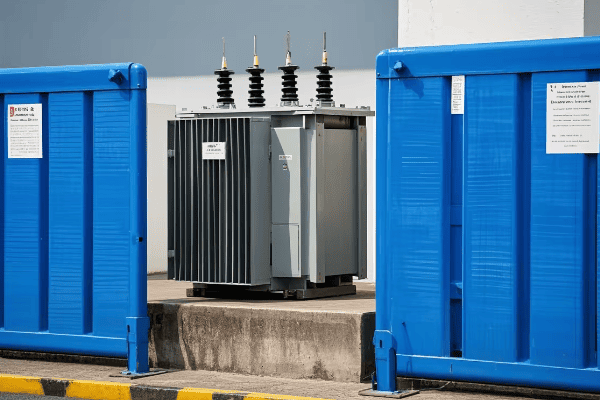
Let’s compare the maintenance aspects of both types:
Pad Mount Transformer Maintenance
-
Ground-Level Access
- No need for bucket trucks or climbing equipment
- Safer for maintenance workers
-
Enclosed Environment
- Components are protected from weather and debris
- Reduced frequency of cleaning and minor repairs
-
Space for Diagnostics
- Easier to set up diagnostic equipment
- More room to work on components
Pole Mount Transformer Maintenance
-
Elevated Position
- Requires specialized equipment for access
- Can be challenging in adverse weather conditions
-
Visibility
- Issues can often be spotted from ground level
- Easier to perform visual inspections
-
Less Susceptible to Ground-Level Issues
- Not affected by flooding or ground-level obstructions
- Less likely to be damaged by vehicles
Here’s a maintenance comparison table:
| Maintenance Aspect | Pad Mount | Pole Mount |
|---|---|---|
| Access Method | Ground level | Requires climbing or lift |
| Equipment Needed | Minimal | Bucket truck, safety harnesses |
| Weather Impact on Maintenance | Low | High |
| Ease of Component Replacement | Easier | More challenging |
| Frequency of Routine Checks | Can be higher | Generally lower |
| Space for Work Area | Ample | Limited |
| Risk to Maintenance Workers | Lower | Higher |
I recall a maintenance project in a dense urban area where we had to service both types of transformers. The pad mount units were much quicker and safer to maintain, allowing us to complete the work with minimal disruption to the busy city streets. However, during a flood event, the pole mount transformers proved more resilient and required less emergency maintenance.
Cost Analysis: Installation and Long-term Expenses of Urban Transformer Options
When it comes to choosing between pad mount and pole mount transformers for urban areas, cost is often a major factor. But it’s not just about the initial price tag – long-term expenses play a crucial role too.
Initially, pole mount transformers are often cheaper to install than pad mount transformers. However, pad mount transformers typically have lower long-term costs due to easier maintenance, longer lifespan, and better protection from environmental factors. The total cost of ownership over time often favors pad mount transformers in urban settings.
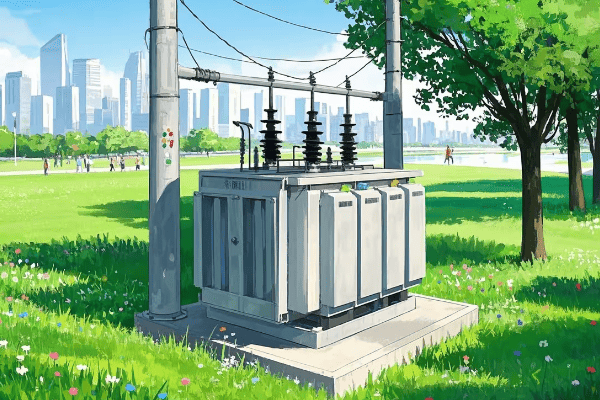
Let’s break down the cost factors for both types:
Initial Costs
-
Pad Mount Transformers
- Higher equipment cost
- Requires concrete pad and enclosure
- Often involves underground wiring installation
-
Pole Mount Transformers
- Lower equipment cost
- Uses existing or new utility poles
- Typically involves overhead wiring
Long-term Costs
-
Pad Mount Transformers
- Lower maintenance costs due to easier access
- Better protection from elements, potentially longer lifespan
- May increase property values due to improved aesthetics
-
Pole Mount Transformers
- Higher maintenance costs due to need for specialized equipment
- More exposed to weather, potentially shorter lifespan
- May require more frequent replacements or repairs
Here’s a cost comparison table:
| Cost Factor | Pad Mount | Pole Mount |
|---|---|---|
| Initial Equipment Cost | Higher | Lower |
| Installation Cost | Higher | Lower |
| Maintenance Cost (Annual) | Lower | Higher |
| Expected Lifespan | 30-40 years | 20-30 years |
| Replacement Frequency | Less frequent | More frequent |
| Property Value Impact | Potentially positive | Neutral to negative |
I remember a project where we initially chose pole mount transformers for a new urban development due to lower upfront costs. However, after five years, the maintenance and replacement costs had already surpassed what we would have spent on pad mount transformers. We ended up retrofitting the entire area with pad mounts, which proved more cost-effective in the long run.
Environmental Factors: Weather Resistance of Pad Mount vs. Pole Mount Transformers
When it comes to urban power distribution, weather resistance is a crucial factor. I’ve seen firsthand how different transformer types handle various environmental challenges.
Pad mount transformers generally offer better weather resistance compared to pole mount transformers. Their enclosed design provides superior protection against rain, snow, and debris. However, pole mount transformers have an advantage in flood-prone areas due to their elevated position.

Let’s compare how these transformer types stand up to different weather conditions:
Pad Mount Transformers
-
Rain and Snow Protection
- Sealed enclosures prevent water ingress
- Less risk of internal component corrosion
-
Wind Resistance
- Lower profile reduces wind impact
- Less susceptible to damage from flying debris
-
Temperature Fluctuations
- Insulated cabinets help maintain stable internal temperatures
- Better performance in extreme heat or cold
Pole Mount Transformers
-
Flood Resistance
- Elevated position keeps components above flood waters
- Less susceptible to water damage during heavy rains
-
Lightning Protection
- Often equipped with lightning arresters
- Height can provide some natural protection
-
Ice and Snow Accumulation
- Less surface area for ice buildup
- Snow tends to slide off more easily
Here’s a weather resistance comparison table:
| Weather Condition | Pad Mount | Pole Mount |
|---|---|---|
| Rain Protection | Excellent | Good |
| Snow Accumulation | Low Impact | Moderate Impact |
| Flood Resistance | Poor | Excellent |
| Wind Resistance | Excellent | Good |
| Heat Dissipation | Good (with proper ventilation) | Excellent (natural air flow) |
| Cold Weather Performance | Good (insulated) | Fair (exposed) |
| Lightning Protection | Good (with proper grounding) | Very Good (with arresters) |
I recall a project in a coastal city prone to hurricanes. We initially installed pole mount transformers, thinking they’d be better in high winds. However, after a particularly severe storm, we found that the pad mount transformers in a neighboring district fared much better. The enclosed design protected them from wind-driven debris and salt spray, resulting in fewer outages and less damage.
Power Distribution Efficiency: Which Transformer Type Performs Better in Cities?
Efficiency in power distribution is a top priority in urban areas. As someone who’s worked on numerous city projects, I’ve seen how the choice of transformer can significantly impact overall system performance.
In urban settings, pad mount transformers often provide better power distribution efficiency compared to pole mount transformers. Their design allows for better cooling, reduced line losses, and easier integration with smart grid technologies. However, the efficiency difference can vary based on specific urban layouts and power demands.
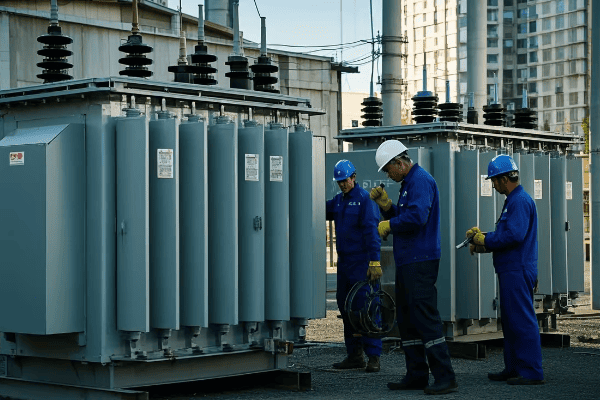
Let’s break down the efficiency factors for both types:
Pad Mount Transformers
-
Cooling Efficiency
- Better heat dissipation due to larger surface area
- Often equipped with advanced cooling systems
-
Line Loss Reduction
- Shorter distance between transformer and end-user in many urban layouts
- Can be placed closer to load centers
-
Smart Grid Integration
- Easier to incorporate monitoring and control equipment
- Better suited for advanced distribution automation
Pole Mount Transformers
-
Overhead Distribution
- Can be more efficient in areas with widely spaced buildings
- Less affected by ground-level obstacles
-
Voltage Regulation
- Easier to adjust tap settings for voltage regulation
- Can be beneficial in areas with fluctuating loads
-
Heat Dissipation
- Natural air cooling can be effective in open areas
- Less affected by ground-level heat sources
Here’s an efficiency comparison table:
| Efficiency Factor | Pad Mount | Pole Mount |
|---|---|---|
| Cooling Effectiveness | High | Moderate |
| Line Losses | Lower in dense areas | Lower in spread-out areas |
| Smart Grid Compatibility | Excellent | Good |
| Voltage Regulation | Good | Very Good |
| Load Management | Excellent | Good |
| Space Efficiency | High | Moderate |
| Energy Savings Potential | Higher | Moderate |
I once worked on a project to upgrade a downtown area’s power distribution. We replaced old pole mount transformers with new pad mount units. The result was a 15% reduction in distribution losses and a significant improvement in power quality. The ability to place pad mount transformers closer to high-demand areas like office buildings and shopping centers made a noticeable difference.
Regulatory Compliance: Urban Codes and Their Impact on Transformer Choice
Navigating urban regulations can be a complex task when it comes to transformer installations. I’ve had to deal with various city codes and their impact on our transformer choices.
Urban codes often favor pad mount transformers due to their lower visual impact and better safety features. Many cities have regulations promoting underground utilities, which align well with pad mount designs. However, some historic districts may require pole mount transformers to maintain traditional aesthetics.
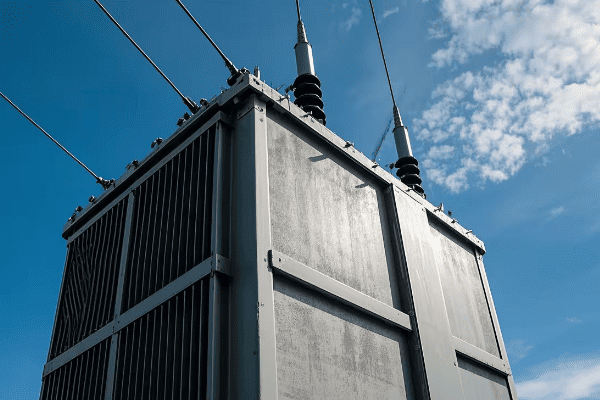
Let’s explore how urban regulations affect transformer choices:
Pad Mount Transformers and Regulations
-
Visual Impact Regulations
- Often preferred in areas with strict aesthetic codes
- Easier to comply with beautification ordinances
-
Safety Codes
- Enclosed design meets many urban safety requirements
- Reduced risk of public contact aligns with liability concerns
-
Noise Ordinances
- Generally quieter operation fits well with residential area regulations
Pole Mount Transformers and Regulations
-
Historic District Requirements
- May be mandated in areas preserving traditional looks
- Often grandfathered in older neighborhoods
-
Easement Regulations
- Can be easier to comply with in areas with established utility easements
- Less impact on property lines in some cases
-
Emergency Access Codes
- Elevated position can meet requirements for flood-prone areas
- May be preferred in areas with strict ground-level clearance rules
Here’s a regulatory compliance comparison table:
| Regulatory Aspect | Pad Mount | Pole Mount |
|---|---|---|
| Visual Impact Compliance | High | Low to Moderate |
| Safety Code Adherence | Excellent | Good |
| Noise Regulation Compliance | Excellent | Good |
| Historic District Suitability | Varies | Often Preferred |
| Easement Requirement Impact | Moderate | Low |
| Underground Utility Compliance | Excellent | Poor |
| ADA Compliance | Good | Excellent |
I remember a project in a rapidly developing urban area where we had to navigate a complex set of new smart city regulations. The city favored pad mount transformers because they could easily incorporate smart monitoring systems and fit with the underground utility mandate. However, we had to use pole mounts in one historic district to comply with preservation codes. It was a balancing act between modern efficiency and historical preservation.
Conclusion
In urban areas, the choice between pad mount and pole mount transformers depends on various factors including space efficiency, safety, aesthetics, maintenance, cost, environmental resistance, power distribution efficiency, and regulatory compliance. While pad mount transformers often offer advantages in dense urban settings, pole mount transformers still have their place in certain scenarios. The best choice ultimately depends on specific urban needs and constraints.
Free CHBEB Transformer Catalog Download
Get the full range of CHBEB transformers in one catalog.
Includes oil-immersed, dry-type, pad-mounted, and custom solutions.
Quick Message
Request A free quote
We'd like to work with you
- +86 15558785111
- [email protected]
- +86 15558785111
What We Do
CHINA BEI ER BIAN (CHBEB) GROUP, with 218 million in registered capital, originated from Beijing Beierbian Transformer Group. Headquartered in Beijing for R&D, it operates major production bases in Nanjing and Yueqing, producing high-quality products.
Latest Product
address
BeiJing
No 3,RongJing East Road,BeiJing Economic Technological Development Area,BeiJing,China
JiangSu
No 7️Xiangfeng Road,Jiangning,NanJing,JiangSu,China
WenZhou
No.211, Wei 16 Road, Industrial Zone, Yueqing, Wenzhou, Zhejiang, China.
XiangYang Industrial Zone ,YueQing,WenZhou,ZheJiang,China
contact us
- [email protected]
- +86 13057780111
- +86 13057780111
- +86 15558785111
Copyright © Bei Er Bian Group


